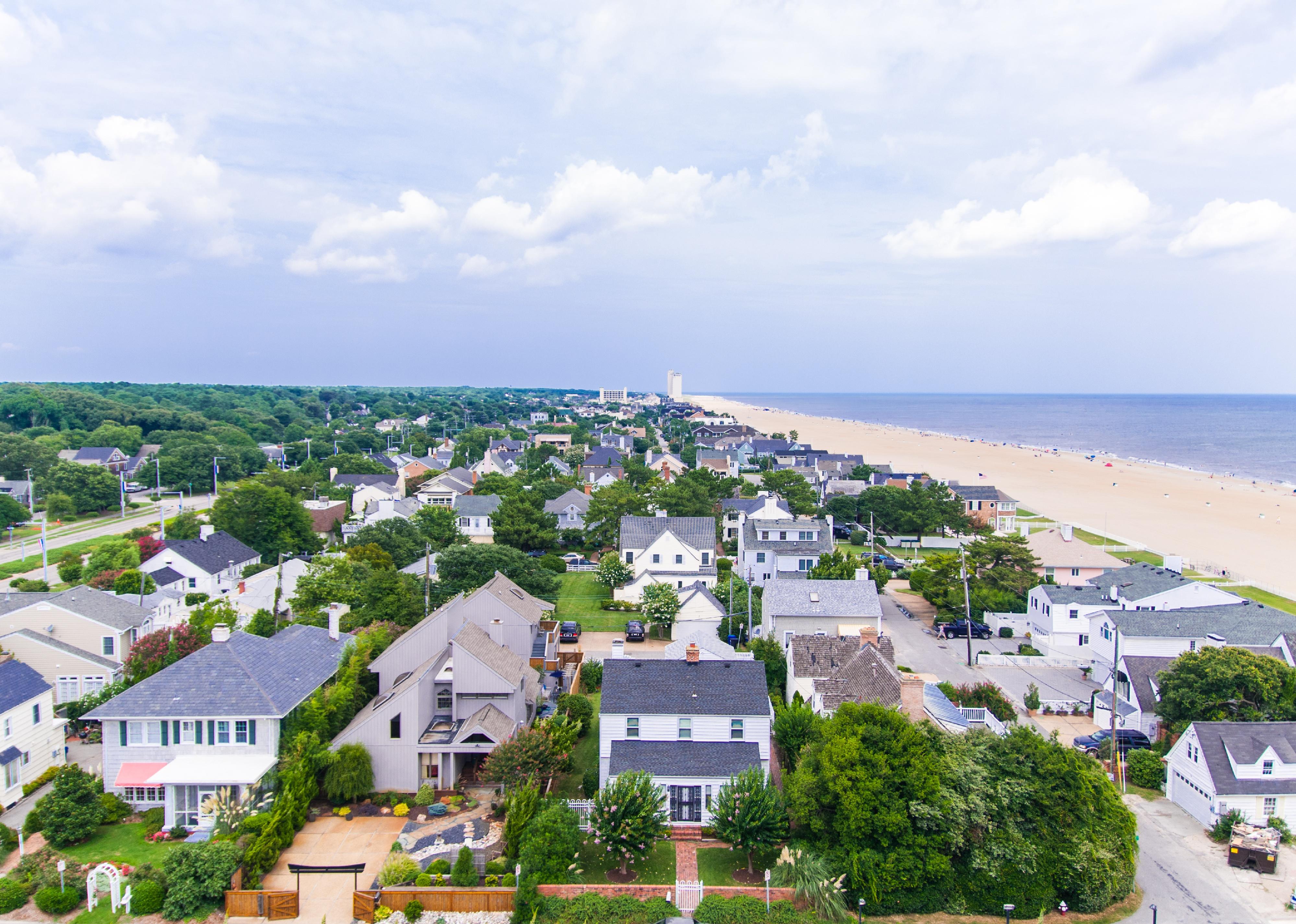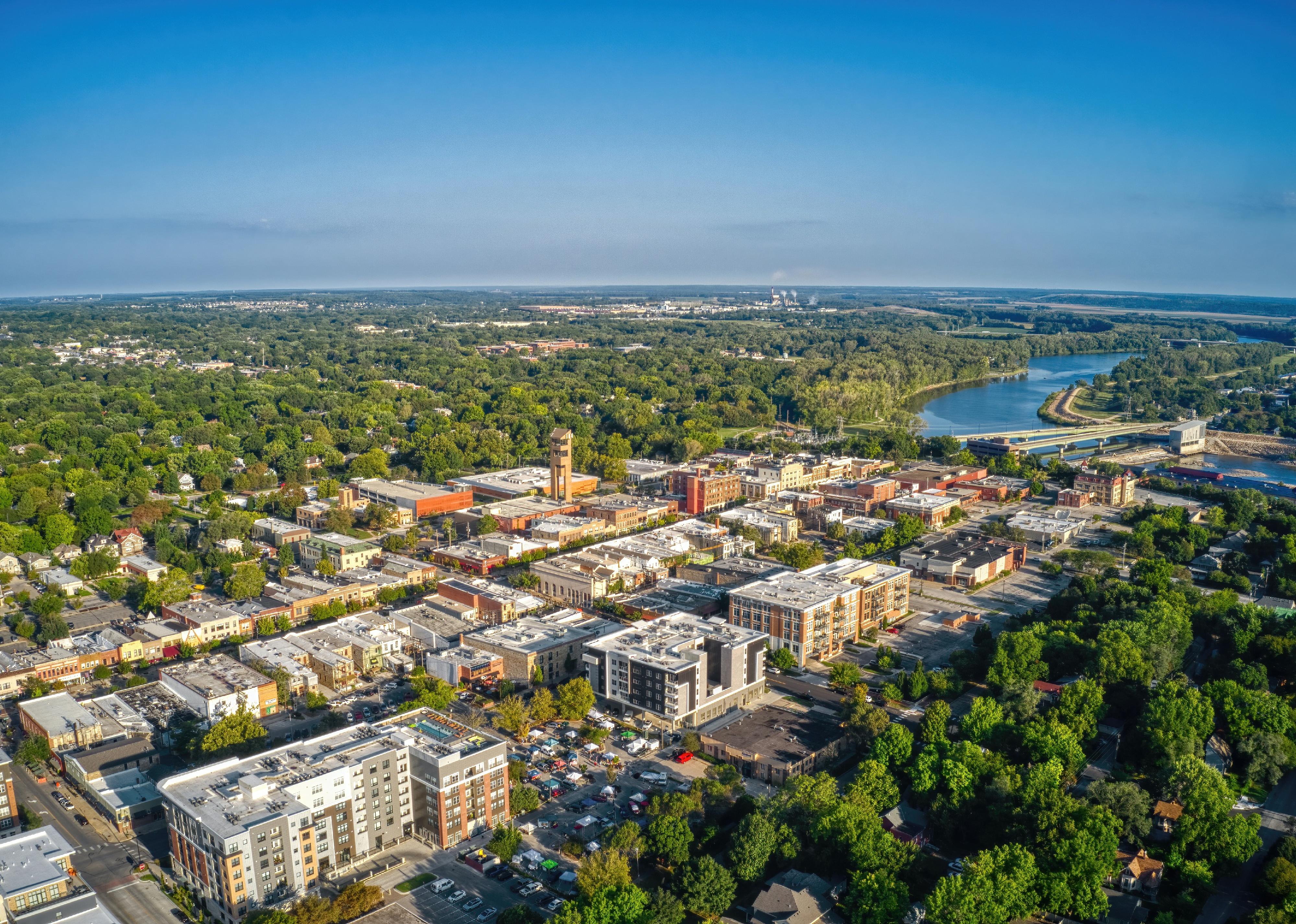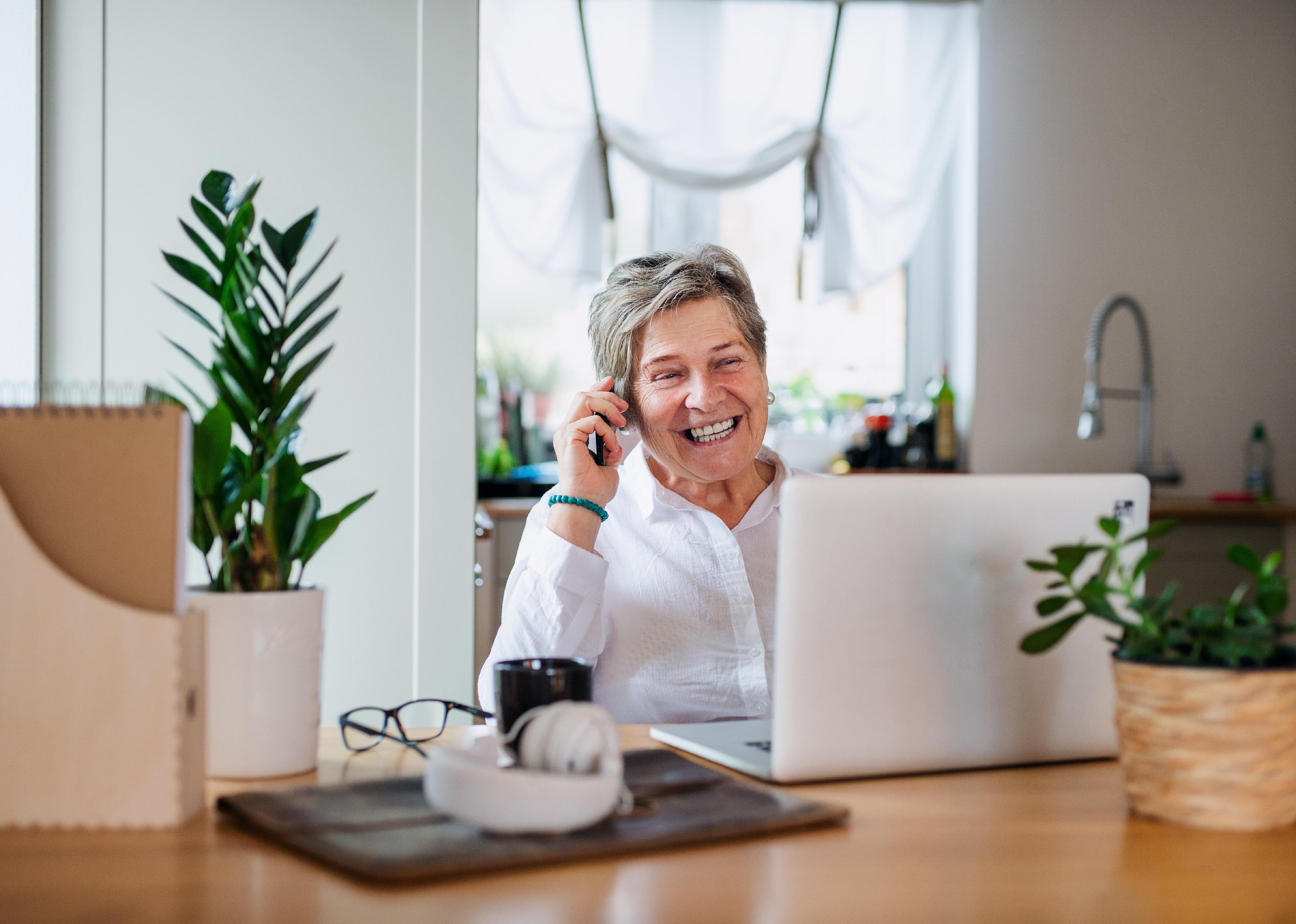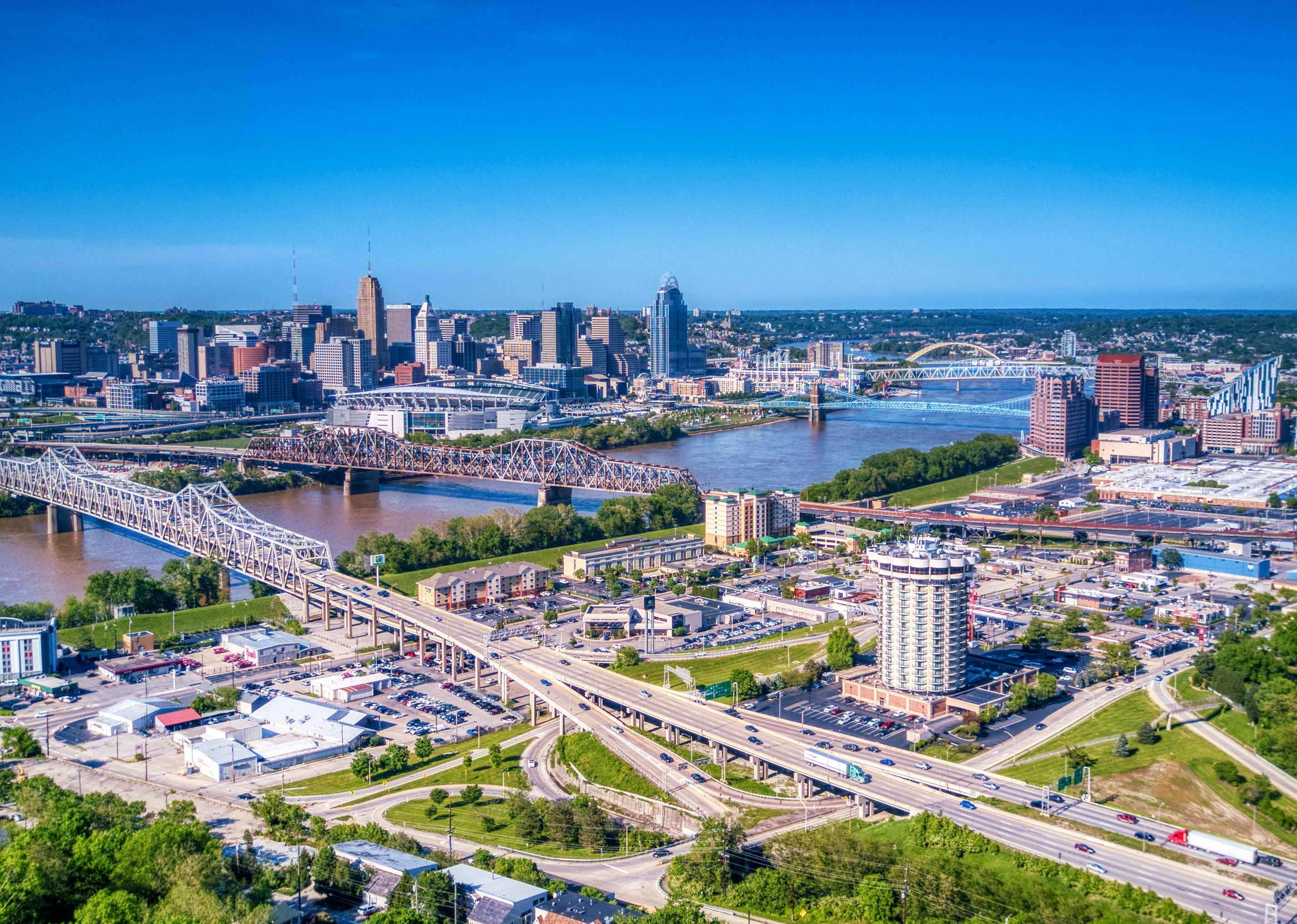States with the most unfunded retirement benefits
Published 11:00 pm Thursday, December 15, 2022
Ground Picture // Shutterstock
States with the most unfunded retirement benefits
Most U.S. states promise their employees pensions upon retirement, but aren’t saving enough money to be able to deliver on those promises. The fallout could threaten state budgets more broadly.
In a pension plan, employees and employers both pay into a system which the employer invests in order to be able to make payouts when the employee retires. Employees’ contributions are deducted from every paycheck.
But when state budgets are tight, many states put off paying the employer’s share. This leaves them with payments due to fund future pension payments. This debt tends to be a state’s largest financial liability, according to Pew, ahead of retiree health care benefits and overall debt. When the liabilities get too high, states may be forced to take money out of health care, safety, and education to meet minimum requirements for funding pension plans.
Stacker examined pension liability data compiled by Pew Trusts to see which states have the highest rates of unfunded retirement benefits. The analysis shows the states that have the highest unfunded pension liabilities (for state-administered defined benefit plans), unfunded retiree health care costs, and tax-supported state debt. These figures are all expressed as a share of overall personal income in a state, excluding capital gains, to normalize the size of the liability based on the state’s potential tax income. States are ranked by the ratio of unfunded pension liabilities to income, with ties broken by the percentage point change from 2007 to 2019.
Liabilities vary depending on the size of a state’s budget and population, as well as the health of the overall economy. Collectively, states’ unfunded pension benefits added up to $1.25 trillion in fiscal year 2019. That’s 6.8% of total income.
Only two states, South Dakota and Wisconsin, had pension plan savings that were equal to or higher than what they owed.
You may also like: Former jobs of every Supreme Court justice
![]()
Sean Pavone // Shutterstock
#50. Wisconsin
– Unfunded pension liabilities (2019): -1.0%
— Percentage point change from 2007: -1.2
– Unfunded retiree health care costs (2016): 0.5% (tied for #14 lowest)
— Percentage point change from 2010: -0.2
– Debt (2020): 2.7%
— Percentage point change since 2007: -1.1
Inside Creative House // Shutterstock
#49. South Dakota
– Unfunded pension liabilities (2019): 0.0%
— Percentage point change from 2007: -0.6
– Unfunded retiree health care costs (2016): 0.0% (#3 lowest)
— Percentage point change from 2010: -0.2
– Debt (2020): 0.8%
— Percentage point change since 2007: +0.4
Jerome L Lawson // Shutterstock
#48. Tennessee
– Unfunded pension liabilities (2019): 0.2%
— Percentage point change from 2007: -0.5
– Unfunded retiree health care costs (2016): 0.5% (tied for #14 lowest)
— Percentage point change from 2010: -0.2
– Debt (2020): 0.5%
— Percentage point change since 2007: -0.1
Dmytro Zinkevych // Shutterstock
#47. New York
– Unfunded pension liabilities (2019): 0.6%
— Percentage point change from 2007: +1.5
– Unfunded retiree health care costs (2016): 7.7% (#7 highest)
— Percentage point change from 2010: +1.7
– Debt (2020): 4.9%
— Percentage point change since 2007: -0.9
SCStock // Shutterstock
#46. Washington
– Unfunded pension liabilities (2019): 0.8%
— Percentage point change from 2007: +0.7
– Unfunded retiree health care costs (2016): 2.7% (#23 highest)
— Percentage point change from 2010: 0
– Debt (2020): 3.9%
— Percentage point change since 2007: -0.5
wutzkohphoto // Shutterstock
#45. Nebraska
– Unfunded pension liabilities (2019): 1.1%
— Percentage point change from 2007: +0.1
– Unfunded retiree health care costs (2016): 0.0% (tied for #1 lowest)
— Percentage point change from 2010: 0
– Debt (2020): 0.0%
— Percentage point change since 2007: 0
Charles Knowles // Shutterstock
#44. Idaho
– Unfunded pension liabilities (2019): 1.2%
— Percentage point change from 2007: +2.4
– Unfunded retiree health care costs (2016): 0.2% (tied for #9 lowest)
— Percentage point change from 2010: -0.1
– Debt (2020): 1.0%
— Percentage point change since 2007: -0.1
Sean Pavone // Shutterstock
#43. Utah
– Unfunded pension liabilities (2019): 2.0%
— Percentage point change from 2007: +0.8
– Unfunded retiree health care costs (2016): 0.1% (tied for #7 lowest)
— Percentage point change from 2010: -0.3
– Debt (2020): 1.7%
— Percentage point change since 2007: 0
Monkey Business Images // Shutterstock
#42. North Carolina
– Unfunded pension liabilities (2019): 2.6%
— Percentage point change from 2007: +3.4
– Unfunded retiree health care costs (2016): 7.5% (#8 highest)
— Percentage point change from 2010: -2.1
– Debt (2020): 1.0%
— Percentage point change since 2007: -1.5
Jacob Boomsma // Shutterstock
#41. Iowa
– Unfunded pension liabilities (2019): 3.7%
— Percentage point change from 2007: +1.5
– Unfunded retiree health care costs (2016): 0.4% (#12 lowest)
— Percentage point change from 2010: 0
– Debt (2020): 0.3%
— Percentage point change since 2007: 0
Sergii Gnatiuk // Shutterstock
#40. Delaware
– Unfunded pension liabilities (2019): 3.9%
— Percentage point change from 2007: +3.6
– Unfunded retiree health care costs (2016): 15.4% (#3 highest)
— Percentage point change from 2010: -0.3
– Debt (2020): 6.1%
— Percentage point change since 2007: +1.3
J.A. Dunbar // Shutterstock
#39. Florida
– Unfunded pension liabilities (2019): 4.0%
— Percentage point change from 2007: +4.3
– Unfunded retiree health care costs (2016): 1.0% (#17 lowest)
— Percentage point change from 2010: +0.3
– Debt (2020): 1.3%
— Percentage point change since 2007: -1.2
Sean Pavone // Shutterstock
#38. Oklahoma
– Unfunded pension liabilities (2019): 4.1%
— Percentage point change from 2007: -4.8
– Unfunded retiree health care costs (2016): 0.0% (tied for #1 lowest)
— Percentage point change from 2010: 0
– Debt (2020): 0.7%
— Percentage point change since 2007: -0.6
Monkey Business Images // Shutterstock
#37. Maine
– Unfunded pension liabilities (2019): 4.1%
— Percentage point change from 2007: -1.5
– Unfunded retiree health care costs (2016): 3.0% (#21 highest)
— Percentage point change from 2010: -1.8
– Debt (2020): 1.9%
— Percentage point change since 2007: +0.2
Sean Pavone // Shutterstock
#36. West Virginia
– Unfunded pension liabilities (2019): 4.2%
— Percentage point change from 2007: -3.7
– Unfunded retiree health care costs (2016): 4.0% (#14 highest)
— Percentage point change from 2010: -7.5
– Debt (2020): 3.6%
— Percentage point change since 2007: +0.1
Prostock-studio // Shutterstock
#35. Indiana
– Unfunded pension liabilities (2019): 4.3%
— Percentage point change from 2007: -0.6
– Unfunded retiree health care costs (2016): 0.1% (#7 lowest)
— Percentage point change from 2010: -0.1
– Debt (2020): 0.4%
— Percentage point change since 2007: -0.9
photo.ua // Shutterstock
#34. Minnesota
– Unfunded pension liabilities (2019): 4.6%
— Percentage point change from 2007: +0.5
– Unfunded retiree health care costs (2016): 0.3% (#11 lowest)
— Percentage point change from 2010: -0.2
– Debt (2020): 2.3%
— Percentage point change since 2007: +0.2
John S. Quinn // Shutterstock
#33. Virginia
– Unfunded pension liabilities (2019): 4.7%
— Percentage point change from 2007: +1.5
– Unfunded retiree health care costs (2016): 1.2% (#21 lowest)
— Percentage point change from 2010: -0.2
– Debt (2020): 2.8%
— Percentage point change since 2007: +1.1
Piyaset // Shutterstock
#32. Georgia
– Unfunded pension liabilities (2019): 5.0%
— Percentage point change from 2007: +3.8
– Unfunded retiree health care costs (2016): 3.7% (#16 highest)
— Percentage point change from 2010: -1.9
– Debt (2020): 1.9%
— Percentage point change since 2007: -0.8
Maria Surtu // Shutterstock
#31. Arkansas
– Unfunded pension liabilities (2019): 5.3%
— Percentage point change from 2007: +2.4
– Unfunded retiree health care costs (2016): 1.9% (#23 lowest)
— Percentage point change from 2010: -0.1
– Debt (2020): 1.2%
— Percentage point change since 2007: +0.4
R.A. Walker Photography // Shutterstock
#30. Texas
– Unfunded pension liabilities (2019): 5.4%
— Percentage point change from 2007: +3.9
– Unfunded retiree health care costs (2016): 6.8% (#9 highest)
— Percentage point change from 2010: +1.2
– Debt (2020): 0.7%
— Percentage point change since 2007: -0.6
Robert Kneschke // Shutterstock
#29. New Hampshire
– Unfunded pension liabilities (2019): 5.6%
— Percentage point change from 2007: +1.5
– Unfunded retiree health care costs (2016): 3.9% (#15 highest)
— Percentage point change from 2010: -1.3
– Debt (2020): 1.1%
— Percentage point change since 2007: 0
Jacob Boomsma // Shutterstock
#28. Kansas
– Unfunded pension liabilities (2019): 5.7%
— Percentage point change from 2007: +0.5
– Unfunded retiree health care costs (2016): 0.2% (#10 lowest)
— Percentage point change from 2010: -0.3
– Debt (2020): 2.6%
— Percentage point change since 2007: -0.6
StockImageFactory.com // Shutterstock
#27. Missouri
– Unfunded pension liabilities (2019): 5.7%
— Percentage point change from 2007: +1.7
– Unfunded retiree health care costs (2016): 1.1% (#19 lowest)
— Percentage point change from 2010: -0.2
– Debt (2020): 0.8%
— Percentage point change since 2007: -1.1
Ground Picture // Shutterstock
#26. Maryland
– Unfunded pension liabilities (2019): 5.7%
— Percentage point change from 2007: +2.1
– Unfunded retiree health care costs (2016): 3.5% (#19 highest)
— Percentage point change from 2010: -2.1
– Debt (2020): 3.6%
— Percentage point change since 2007: +0.9
Jacob Boomsma // Shutterstock
#25. North Dakota
– Unfunded pension liabilities (2019): 5.7%
— Percentage point change from 2007: +3.4
– Unfunded retiree health care costs (2016): 0.2% (tied for #9 lowest)
— Percentage point change from 2010: -0.1
– Debt (2020): 0.1%
— Percentage point change since 2007: -0.9
DisobeyArt // Shutterstock
#24. Ohio
– Unfunded pension liabilities (2019): 7.2%
— Percentage point change from 2007: +3
– Unfunded retiree health care costs (2016): 1.9% (#24 lowest)
— Percentage point change from 2010: -3.8
– Debt (2020): 2.1%
— Percentage point change since 2007: -0.5
Rawpixel.com // Shutterstock
#23. California
– Unfunded pension liabilities (2019): 7.3%
— Percentage point change from 2007: +4
– Unfunded retiree health care costs (2016): 3.5% (#20 highest)
— Percentage point change from 2010: -1.3
– Debt (2020): 3.1%
— Percentage point change since 2007: -0.9
PeopleImages.com – Yuri A // Shutterstock
#22. Colorado
– Unfunded pension liabilities (2019): 7.5%
— Percentage point change from 2007: +1
– Unfunded retiree health care costs (2016): 0.7% (#16 lowest)
— Percentage point change from 2010: -0.2
– Debt (2020): 1.1%
— Percentage point change since 2007: +0.4
NEKVT // Shutterstock
#21. Vermont
– Unfunded pension liabilities (2019): 7.5%
— Percentage point change from 2007: +6.8
– Unfunded retiree health care costs (2016): 5.8% (#10 highest)
— Percentage point change from 2010: -0.4
– Debt (2020): 1.9%
— Percentage point change since 2007: +0.1
Monkey Business Images // Shutterstock
#20. Wyoming
– Unfunded pension liabilities (2019): 7.8%
— Percentage point change from 2007: +6.3
– Unfunded retiree health care costs (2016): 2.1% (#25 lowest)
— Percentage point change from 2010: +1.2
– Debt (2020): 0.0%
— Percentage point change since 2007: -0.2
Josemaria Toscano // Shutterstock
#19. Oregon
– Unfunded pension liabilities (2019): 7.8%
— Percentage point change from 2007: +12.7
– Unfunded retiree health care costs (2016): 0.1% (tied for #7 lowest)
— Percentage point change from 2010: -0.3
– Debt (2020): 3.6%
— Percentage point change since 2007: -1
Jacob Lund // Shutterstock
#18. Alabama
– Unfunded pension liabilities (2019): 7.9%
— Percentage point change from 2007: +2.7
– Unfunded retiree health care costs (2016): 4.6% (#13 highest)
— Percentage point change from 2010: -4.6
– Debt (2020): 2.2%
— Percentage point change since 2007: -0.4
Michael Sean OLeary // Shutterstock
#17. Massachusetts
– Unfunded pension liabilities (2019): 7.9%
— Percentage point change from 2007: +4.2
– Unfunded retiree health care costs (2016): 3.7% (#17 highest)
— Percentage point change from 2010: -0.6
– Debt (2020): 8.0%
— Percentage point change since 2007: +0.9
wavebreakmedia // Shutterstock
#16. Arizona
– Unfunded pension liabilities (2019): 8.0%
— Percentage point change from 2007: +4.5
– Unfunded retiree health care costs (2016): 0.0% (#4 lowest)
— Percentage point change from 2010: -0.3
– Debt (2020): 0.9%
— Percentage point change since 2007: -0.9
Kristi Blokhin // Shutterstock
#15. Louisiana
– Unfunded pension liabilities (2019): 8.2%
— Percentage point change from 2007: +1.5
– Unfunded retiree health care costs (2016): 2.7% (#22 highest)
— Percentage point change from 2010: -4
– Debt (2020): 3.1%
— Percentage point change since 2007: +0.7
Ground Picture // Shutterstock
#14. Montana
– Unfunded pension liabilities (2019): 8.4%
— Percentage point change from 2007: +3.9
– Unfunded retiree health care costs (2016): 1.0% (#18 lowest)
— Percentage point change from 2010: -0.5
– Debt (2020): 0.3%
— Percentage point change since 2007: -0.7
Hanson L // Shutterstock
#13. Michigan
– Unfunded pension liabilities (2019): 8.4%
— Percentage point change from 2007: +6.2
– Unfunded retiree health care costs (2016): 2.1% (#25 highest)
— Percentage point change from 2010: -10.4
– Debt (2020): 1.2%
— Percentage point change since 2007: -0.9
Monkey Business Images // Shutterstock
#12. Nevada
– Unfunded pension liabilities (2019): 8.6%
— Percentage point change from 2007: +2.5
– Unfunded retiree health care costs (2016): 1.1% (#20 lowest)
— Percentage point change from 2010: -0.5
– Debt (2020): 1.1%
— Percentage point change since 2007: -0.5
Sean Pavone // Shutterstock
#11. Pennsylvania
– Unfunded pension liabilities (2019): 8.8%
— Percentage point change from 2007: +6.8
– Unfunded retiree health care costs (2016): 3.6% (#18 highest)
— Percentage point change from 2010: +0.4
– Debt (2020): 2.3%
— Percentage point change since 2007: +0.2
Me dia // Shutterstock
#10. Rhode Island
– Unfunded pension liabilities (2019): 9.2%
— Percentage point change from 2007: -2.1
– Unfunded retiree health care costs (2016): 1.4% (#22 lowest)
— Percentage point change from 2010: -0.5
– Debt (2020): 3.9%
— Percentage point change since 2007: -0.4
f11photo // Shutterstock
#9. South Carolina
– Unfunded pension liabilities (2019): 11.1%
— Percentage point change from 2007: +3.5
– Unfunded retiree health care costs (2016): 5.2% (#11 highest)
— Percentage point change from 2010: -0.8
– Debt (2020): 0.9%
— Percentage point change since 2007: -2.1
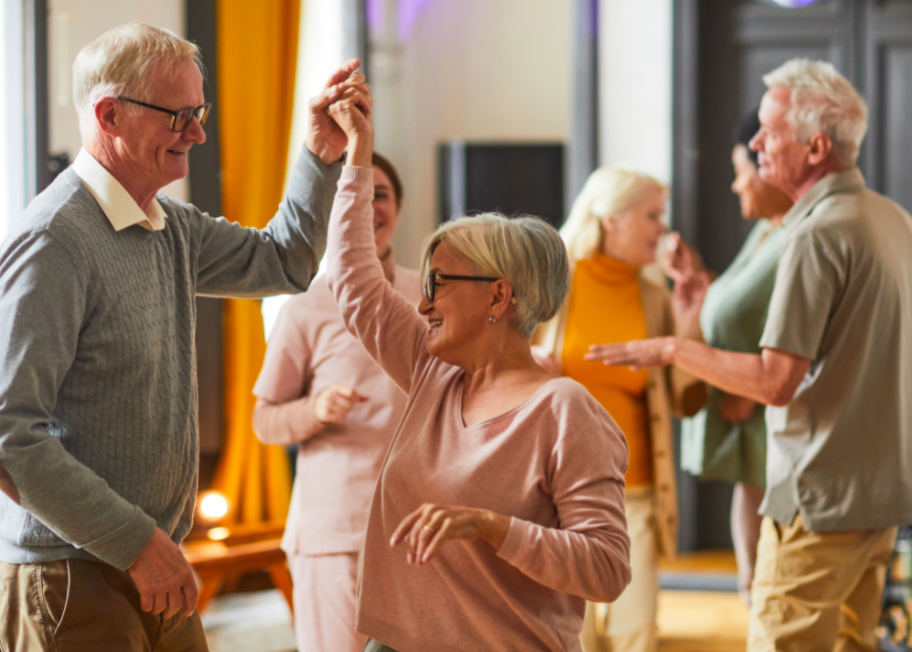
SeventyFour // Shutterstock
#8. Connecticut
– Unfunded pension liabilities (2019): 14.8%
— Percentage point change from 2007: +7.3
– Unfunded retiree health care costs (2016): 8.8% (#5 highest)
— Percentage point change from 2010: -3.2
– Debt (2020): 8.9%
— Percentage point change since 2007: +2.5
Rotorhead 30A Productions // Shutterstock
#7. Kentucky
– Unfunded pension liabilities (2019): 15.2%
— Percentage point change from 2007: +7.5
– Unfunded retiree health care costs (2016): 2.6% (#24 highest)
— Percentage point change from 2010: -2.6
– Debt (2020): 4.2%
— Percentage point change since 2007: -0.2
Katherine Welles // Shutterstock
#6. Mississippi
– Unfunded pension liabilities (2019): 15.3%
— Percentage point change from 2007: +6.8
– Unfunded retiree health care costs (2016): 0.7% (#15 lowest)
— Percentage point change from 2010: -0.1
– Debt (2020): 4.5%
— Percentage point change since 2007: +0.2
belushi // Shutterstock
#5. New Mexico
– Unfunded pension liabilities (2019): 15.7%
— Percentage point change from 2007: +8.6
– Unfunded retiree health care costs (2016): 4.7% (#12 highest)
— Percentage point change from 2010: -0.1
– Debt (2020): 2.2%
— Percentage point change since 2007: -2.4
Ingo70 // Shutterstock
#4. Alaska
– Unfunded pension liabilities (2019): 16.3%
— Percentage point change from 2007: +4.3
– Unfunded retiree health care costs (2016): 19.7% (#1 highest)
— Percentage point change from 2010: +2.2
– Debt (2020): 1.8%
— Percentage point change since 2007: -0.3
bbernard // Shutterstock
#3. Hawaii
– Unfunded pension liabilities (2019): 18.0%
— Percentage point change from 2007: +8.5
– Unfunded retiree health care costs (2016): 12.7% (#4 highest)
— Percentage point change from 2010: -15.3
– Debt (2020): 10.4%
— Percentage point change since 2007: +1.7
Page Light Studios // Shutterstock
#2. Illinois
– Unfunded pension liabilities (2019): 19.4%
— Percentage point change from 2007: +11.6
– Unfunded retiree health care costs (2016): 8.0% (#6 highest)
— Percentage point change from 2010: -0.1
– Debt (2020): 4.5%
— Percentage point change since 2007: -0.2
Jacob Lund // Shutterstock
#1. New Jersey
– Unfunded pension liabilities (2019): 20.2%
— Percentage point change from 2007: +13.7
– Unfunded retiree health care costs (2016): 15.5% (#2 highest)
— Percentage point change from 2010: -0.4
– Debt (2020): 6.2%
— Percentage point change since 2007: -0.7




















